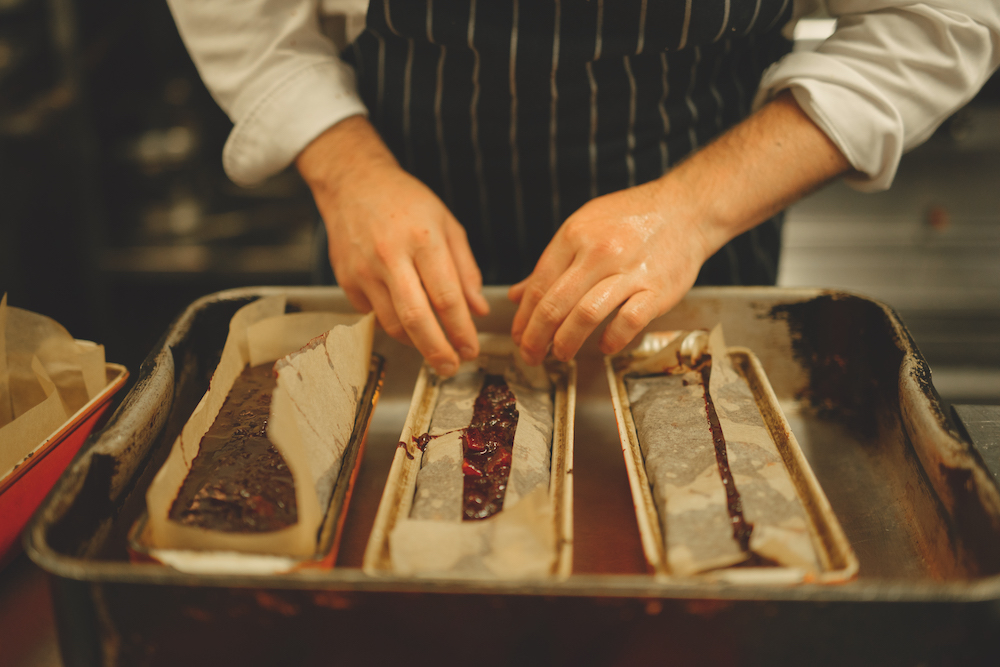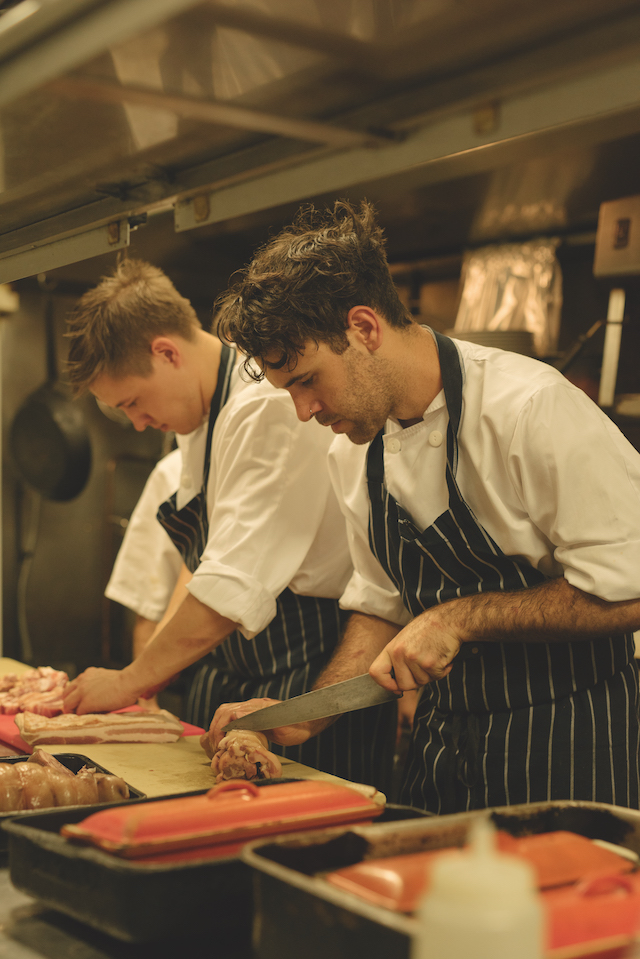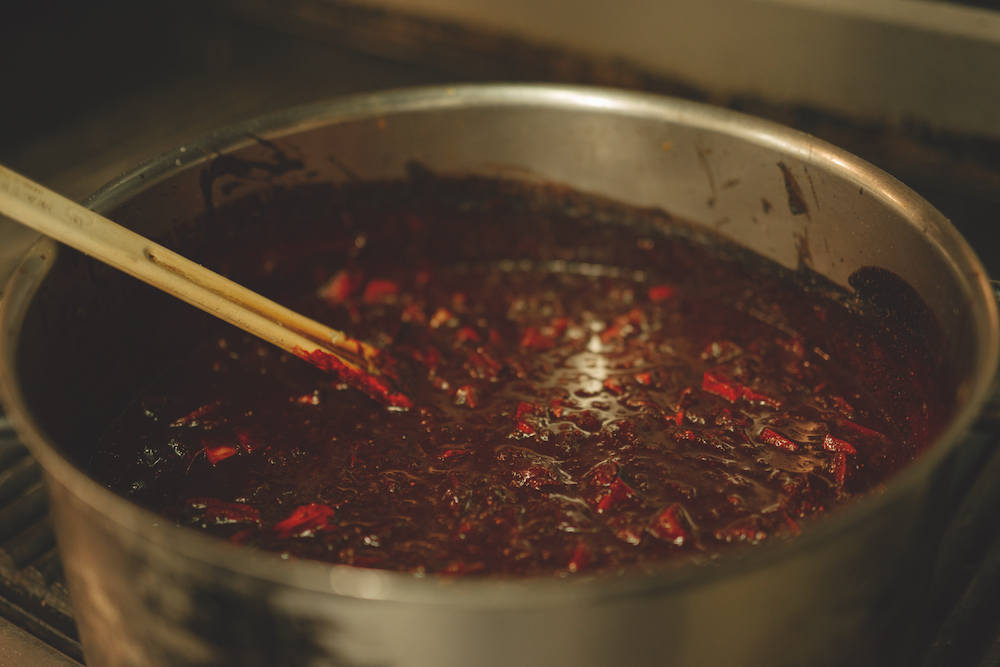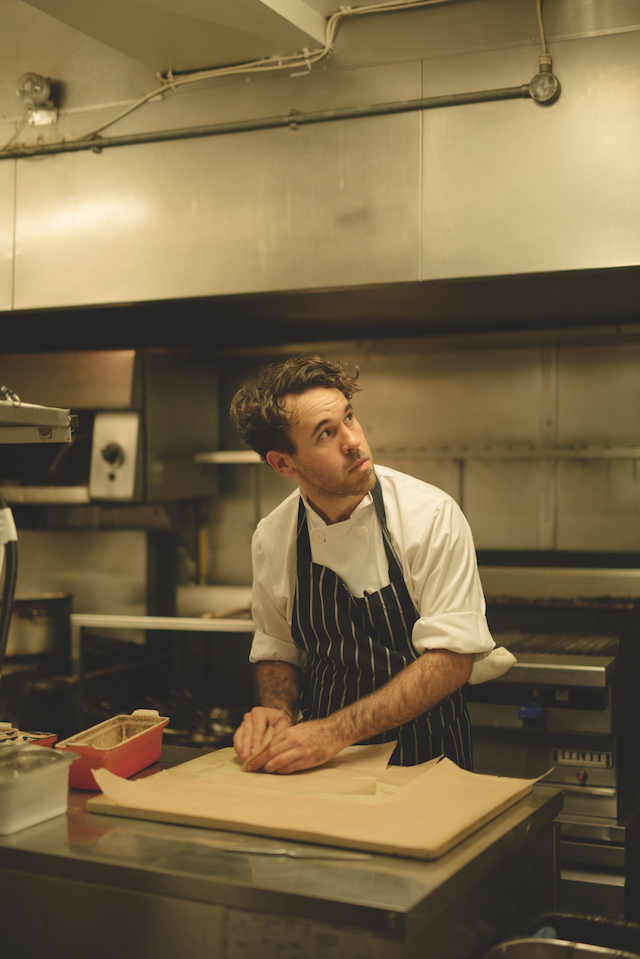For the latest issue Port’s food editor, Fergus Henderson, cooks up a warming winter dish with his team at St. John – blood cake and fried eggs

Why should vampires have all the fun? Don’t shrink from blood; it can make you live forever or, if you are feeling like death, you just need a little dose to bring you back to life. At our restaurant the blood used to be delivered in sacks which caused all sorts of problems; one false move and you’d have dressed your surroundings as the scene of an unspeakable murder. The delivery people would come and leave splashes through the corridor, into the bar and up the stairs to the kitchen, in a suspicious trail. The order now arrives in plastic flagons, like large milk bottles, and I rather miss those trails.
For a while we had some difficulty obtaining blood at all, as slaughterhouse regulations had altered in some way. We tried briefly to make do with the powdered blood that seemed to be our only option, but the texture was grainy and, strangely, powdered blood makes me squeamish in a way that fresh blood does not. Interestingly, for others though, in the world of offal blood is in the category of brains and spleen in inspiring the greatest trepidation. And yet black pudding is an essential feature of the English breakfast plate, nestling in the beans with a friendly and approachable demeanour. Perhaps this expresses that peculiar cognitive disconnection between the plate and the process, and maybe this is why I mourn the loss of those sacks. There is less of a sense of origin.

What is the difference between black pudding and blood cake? There is no punchline. As the names might suggest, the former is somewhat heavier, the ballast provided by the addition of grains. There are as many regional differences as there are regions and, flattering ourselves that we might be a little region where we sit in Farringdon, we have our own proud variation using wobbly chunks of cubed pig’s head in place of the fat. What a sophisticated blood experience! And more sophisticated still, we use polenta or semolina which gives the finished cake a beautiful lightness. Sophistication all the way!
METHOD
You will need to ask your butcher for the blood. It may be difficult to obtain, but it can be got. Here we have forgone the addition of the pig’s head in favour of the more approachable back fat. The cornmeal remains, for essential sophistication. You will also need a bread tin lined with cling film.
There is a love affair between a fried egg and blood cake. Both started existence as life-giving elements, both arrive on the plate getting on like a house on fire.
1 large or 2 small onions, peeled and finely chopped
6 cloves of garlic, finely chopped
A dollop of duck fat
Half a bunch of marjoram – pick the leaves off
and chop finely
1/2 tsp crushed mace
1/2 tsp crushed allspice
1 litre of fresh pig’s blood
50g yellow cornmeal (polenta)
Sea salt and black pepper
250g back fat (salted lardo will suffice), cut into
5mm cubes
6 free range eggs

In a pan large enough to take all the ingredients, sweat the onions and garlic in the duck fat until clear, soft and giving, but not brown. Add the marjoram, spices, blood and cornmeal, and stir on a gentle heat until the blood starts to thicken to a running porridge consistency (do not let it cook and set). It has to have density or the back fat will sink to the bottom when added. At this point (not for the more squeamish cook), taste and adjust the seasoning with salt and pepper if necessary, and when happy remove the pan from the heat and add the chopped back fat.
Stir to spread the fatty chunks through the blood and decant the mixture into the cling-film-lined bread tin. Cover with tinfoil and place on a flat folded tea towel in a deep roasting tray or dish. Surround with water (not going over the edge of the bread tin) and bake in a gentle to medium oven for one and a half hours. Check that a skewer or sharp knife comes out clean, then remove and allow to cool and set (wrapped in cling film it keeps very well in the fridge).

Once firm, cut into 12mm thick slices, get two frying pans hot, add some duck fat to them, and, in one pan, gently fry your slices of blood cake until heated through. In the other pan, fry a pair of eggs per person. To serve, give each plate two slices of fried blood cake, topped with a couple of fried eggs, and eat straight away. It has surprising soothing qualities, this dish.
Photography Jack Orton

This article is taken from issue 23. To buy the issue or subscribe, click here.




